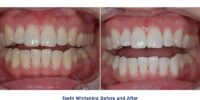What is orthognathic surgery

Orthognathic surgery, also known as corrective jaw surgery or orthognathic orthopedics, is a surgical procedure performed by oral and maxillofacial surgeons in collaboration with orthodontists to correct severe jaw irregularities and misalignment.
This type of surgery is used to improve the function of the jaw and facial structures, including the bite, speech, and aesthetics.
Here are some key aspects of orthognathic surgery:
Indications for orthognathic surgery
Orthognathic surgery is typically recommended for individuals with significant jaw discrepancies or malocclusions that cannot be corrected through orthodontic treatment alone. Common indications include:
- Severe overbites or underbites
- Crossbites
- Open bites
- Facial asymmetry
- Jaw misalignments due to birth defects or trauma
- Difficulty chewing, biting, or speaking due to jaw problems
- Sleep apnea or other breathing difficulties related to jaw structure
Procedure of orthognathic surgery
- Pre-surgical Orthodontic Treatment: Before surgery, patients typically undergo orthodontic treatment to align their teeth as closely as possible. This step is crucial for achieving optimal results and post-surgery stability.
- Surgical Planning: Oral and maxillofacial surgeons collaborate closely with orthodontists to plan the surgery. Advanced imaging techniques such as 3D CT scans are used to create precise surgical plans.
- Surgery: The surgery is performed under general anesthesia. Depending on the specific case, one or both jaws may be repositioned. Surgical techniques involve cutting the jawbone(s), repositioning them, and securing them in their new positions with screws, plates, or wires. The surgery is minimally invasive, and the incisions are typically made inside the mouth to minimize visible scarring.
- Recovery: Recovery times vary but may involve several weeks of soft food diets and limited jaw movement. Patients are closely monitored during the healing process to ensure proper alignment and function.
Benefits of orthognathic surgery
Orthognathic surgery offers numerous benefits, including:
- Improved facial aesthetics and symmetry
- Correction of bite problems, leading to better chewing and speech
- Resolution of breathing problems, especially in cases of obstructive sleep apnea
- Enhanced self-esteem and confidence due to improved facial appearance
Risks and Considerations
Orthognathic surgery is a complex procedure, and like any surgical intervention, it carries certain risks, including infection, bleeding, and the potential for relapse. Patients must be committed to following their orthodontic and surgical treatment plans to achieve the best outcomes.
Orthognathic surgery, like any surgical procedure, carries certain risks and considerations that patients should be aware of before undergoing the treatment. It’s essential for individuals considering orthognathic surgery to discuss these factors thoroughly with their surgical and dental team. Here are some of the key risks and considerations associated with orthognathic surgery:
1. Surgical Risks:
- Infection: There is a risk of post-operative infection, although it is relatively low with proper surgical techniques and post-operative care.
- Bleeding: Like any surgery, there is a risk of bleeding during and after the procedure.
- Nerve Damage: The surgery involves working near facial nerves, and there is a risk of temporary or, in rare cases, permanent nerve damage. This can result in numbness or altered sensation in the face, lips, or tongue.
- Anesthesia Risks: General anesthesia is used during orthognathic surgery, which carries its own set of potential risks. Anesthesia complications are rare but can include allergic reactions and respiratory issues.
2. Relapse Risk:
- While orthognathic surgery can provide long-term correction of jaw irregularities, there is always a risk of relapse over time. To minimize this risk, it’s crucial for patients to closely follow post-surgery instructions, including the use of retainers and ongoing orthodontic care.
3. Swelling and Discomfort:
- After surgery, patients can experience swelling, bruising, and discomfort in the face and jaw area. This is typically temporary but can last for several weeks. Pain management is an important aspect of recovery.
4. Recovery Time:
- Orthognathic surgery requires a significant recovery period. Patients may need to take time off work or school, and they should be prepared for a restricted diet and limited physical activity during the initial healing phase.
5. Dietary Restrictions:
- Following surgery, patients are usually placed on a soft or liquid diet for a period of time. This can be challenging for some individuals, and maintaining proper nutrition is important during this phase.
6. Emotional and Psychological Considerations:
- The process of undergoing orthognathic surgery, including the preparation and recovery phases, can be emotionally and psychologically challenging. Patients may experience anxiety, stress, or changes in self-esteem and body image. Psychological support and counseling can be beneficial.
7. Financial Considerations:
- Orthognathic surgery can be costly, and insurance coverage may vary. Patients should discuss financial considerations with their healthcare providers and insurance companies to understand the potential costs involved.
8. Treatment Outcomes:
- While orthognathic surgery can significantly improve bite function, facial aesthetics, and overall quality of life, it’s important to have realistic expectations regarding the final results. The outcome can vary depending on the complexity of the case and individual healin
Collaborative Approach
Orthognathic surgery often involves a collaborative approach between orthodontists and oral and maxillofacial surgeons. Orthodontists prepare the patient’s teeth and bite for surgery, while oral surgeons perform the surgical correction.
Orthognathic surgery can be life-changing for individuals with significant jaw irregularities, as it not only improves facial aesthetics but also restores proper function and often leads to a significantly improved quality of life. If you believe you may be a candidate for orthognathic surgery, it’s important to consult with a team of dental and surgical specialists who can assess your needs and create a personalized treatment plan.
Orthognathic vs Orthographic
Orthognathic and orthographic are two terms used in different contexts, primarily in dentistry, surgery, and engineering. Here’s an explanation of each term:
Orthognathic:
- Context: Orthognathic is related to the field of oral and maxillofacial surgery.
- Meaning: Orthognathic means “straight jaw.” It refers to procedures and treatments that involve the correction of severe jaw irregularities, including misalignments, malocclusions (improper bite), and facial asymmetry. Orthognathic surgery, also known as corrective jaw surgery, is a surgical procedure to reposition the upper jaw (maxilla), lower jaw (mandible), or both to improve function and aesthetics.
- Applications: Orthognathic surgery is commonly used to correct issues such as overbites, underbites, crossbites, open bites, facial asymmetry, and other significant jaw-related problems.
Orthographic:
- Context: Orthographic is used primarily in the fields of engineering, graphics, and design.
- Meaning: Orthographic refers to a method of representing a three-dimensional object in two dimensions using multiple views or projections. It is a technical drawing technique used to accurately depict the shape, size, and features of objects from various angles and viewpoints. Orthographic projections often include front, top, side, and isometric views of an object.
- Applications: Orthographic projections are commonly used in engineering and architecture to create detailed plans, blueprints, and diagrams of buildings, machinery, and other complex structures. They are essential for conveying precise information for construction, manufacturing, and design.
In summary, “orthognathic” pertains to the field of oral and maxillofacial surgery and refers to procedures related to the correction of severe jaw irregularities. On the other hand, “orthographic” is a term used in engineering and design to describe a method of representing three-dimensional objects in two dimensions through technical drawings and projections. These terms are distinct and unrelated, each with its own specific application and meaning.








